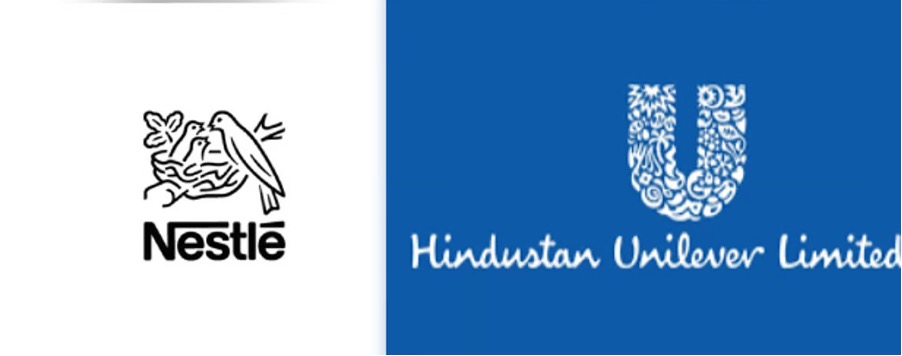In the realm of Indian consumer brands, few have blazed a trail as remarkable as Patanjali Ayurved. Founded in 1997 by the charismatic yoga guru and entrepreneur Baba Ramdev, Patanjali Ayurved has transcended its Ayurvedic roots to become a household name, synonymous with affordable, natural, and often controversial products. Today, it stands as a formidable challenger to established FMCG giants. Its crown jewel, the “Ace” line, embodies the audacity and ambition that drives this modern consumer phenomenon.
But the story begins not in gleaming supermarkets, but in the quiet town of Haridwar, where a young Ramdev established his ashram and nurtured his vision for an Ayurveda-centered revolution. From herbal concoctions brewed in clay pots to yoga camps echoing Ramdev’s energetic chants, word of Patanjali’s offerings spread organically. Trust in Baba Ramdev, a self-proclaimed “sanyasi entrepreneur,” became the catalyst, fostering a loyal following hungry for alternatives to expensive, chemical-laden products.
Fast forward to the present, and Patanjali’s footprint sprawls across the Indian landscape. With a reported annual turnover exceeding $2 billion, it has captured a significant chunk of the market share in categories like toothpaste, honey, and noodles. Patanjali’s success didn’t just disrupt established brands; it redefined affordability and consumer expectations. By vertically integrating production, sourcing raw materials directly from farmers and leveraging its robust distribution network, Patanjali offered quality at remarkably low prices, resonating deeply with a price-conscious population.

This is where “Ace” enters the picture. Launched in 2016, “Ace” represents Patanjali’s audacious foray into the premium segment. Featuring sleek packaging, targeted advertising campaigns, and innovative product categories like herbal hair gels and sports drinks, “Ace” marks a clear departure from the earthy aesthetic and traditional offerings that defined Patanjali’s early days. It’s a calculated move, aiming to capture a younger, more aspirational demographic while retaining the loyal customer base.
The strategic significance of “Ace” cannot be overstated. It’s a testament to Patanjali’s ambition to move beyond its “affordable Ayurveda” image and compete directly with established players in the lucrative premium market. It’s also a gamble, testing the limits of brand loyalty and consumer perception. Whether “Ace” becomes the catalyst for Patanjali’s global domination or a cautionary tale of overextending, its story remains firmly intertwined with the fascinating trajectory of this unconventional brand.
This brief introduction sets the stage for a deeper exploration of Patanjali, “Ace,” and the captivating saga of their meteoric rise in the Indian market. Buckle up as we delve into the factors that fueled this success, the challenges faced, and the impact Patanjali has had on Indian consumer culture.
Understanding Ace: Beyond Ayurveda, Targeting Ambition
Patanjali’s “Ace” line redefines its image, stepping beyond the confines of traditional Ayurveda into a dynamic world of contemporary consumer aspirations. But what’s under the hood of this ambitious brand?
Products for a Modern Audience:
“Ace” targets a young, health-conscious audience with a diverse product range:
Grooming Essentials: Hair gels, beard washes, and face washes featuring Ayurvedic blends with a modern twist.
Health and Wellness: Sports drinks, protein powders, and energy bars, capitalizing on the fitness trend.
Cosmetics: Herbal lipsticks, BB creams, and compact powders, aiming for a natural yet glamorous look.
Snacks and Beverages: Cookies, chips, and fruit juices with “healthy” ingredients like quinoa and honey.
Ayurvedic Fusion: Blending traditional herbs with modern ingredients, like chia seeds in energy bars, creates a unique health proposition.
Quality at a Premium: While priced higher than regular Patanjali products, “Ace” offers competitive pricing compared to established brands, maintaining an edge in affordability.
Natural and Sustainable: Leveraging Patanjali’s image, “Ace” emphasizes natural ingredients and eco-friendly packaging, appealing to environmentally conscious consumers.

Pricing Strategy
“Ace” occupies a middle ground:
More expensive than regular Patanjali products, reflecting the premium ingredients and branding.
Undercutting established brands like HUL and Nestle, attracting price-sensitive consumers seeking natural alternatives.
Branding and Marketing: A Cocktail of Modernity and Influence
“Ace” abandons the earthy aesthetic of Patanjali, sporting sleek packaging and vibrant colors. Advertisements feature young, active models, a stark contrast to Baba Ramdev’s traditional presence. Social media campaigns and influencer collaborations further solidify the brand’s trendy image.
Baba Ramdev's Role
While less directly visible in “Ace” marketing, Baba Ramdev’s image remains crucial. His endorsement lends credibility to the brand’s Ayurvedic roots and attracts his loyal following. His occasional appearances in “Ace” ads subtly remind consumers of Patanjali’s core values.
The "Ace" Effect
Patanjali’s foray into premium products signifies:
Growth Ambitions: It seeks to tap into a lucrative market segment and expand its customer base.
Image Transformation: It sheds the “affordable Ayurveda” label and aims for a younger, aspirational audience.
Consumer Evolution: It reflects changing Indian consumer preferences, embracing quality, health, and natural ingredients.
However, “Ace” faces challenges:
Maintaining quality at scale: Can it deliver premium quality for mass production?
Competing with established giants: Can it hold its own against well- entrenched brands?
Managing Baba Ramdev’s image: Can it balance his influence with a modern, independent brand identity?
“Ace” is a bold experiment, testing the boundaries of Patanjali’s brand and showcasing its potential to evolve. Its success will depend on its ability to adapt to changing consumer tastes, navigate fierce competition, and retain the essence of what made Patanjali a household name in the first place.
This analysis provides a deeper dive into the “Ace” product range, pricing strategy, and branding, highlighting its unique positioning and the challenges it faces. Remember, this is just a starting point.

Navigating the Maze: Challenges and Opportunities for Patanjali's Ace
Patanjali’s “Ace” line, while showcasing the brand’s ambition and adaptability, still faces a formidable path ahead. Here, we delve into the potential challenges and opportunities that could shape its future:
Challenges:
Competition from Established Brands: Giants like HUL and Nestle have decades of experience, robust marketing strategies, and established market dominance. Ace needs to carve out a distinct niche and prove its quality to compete effectively.
Quality Concerns: Maintaining premium quality at scale without compromising affordability becomes crucial. Any dip in quality, especially compared to established brands, could quickly erode consumer trust.
Regulatory Issues: Patanjali has faced controversies regarding product claims and certifications. Stringent regulations and potential legal hurdles could impede Ace’s growth and impact its reputation.
Opportunities:
Diversification: Expanding beyond its current categories into personal care, baby care, or home hygiene products could attract new customer segments and drive further growth.
Premiumization: Further pushing the “premium” aspect of Ace, with superior ingredients, innovative packaging, and targeted marketing, could solidify its position in the aspirational market segment.
Expansion into New Categories or Markets: Entering the organic food sector, exploring international markets, or venturing into online retail could unlock new avenues for growth and brand recognition.

Baba Ramdev’s Influence
Baba Ramdev remains a double-edged sword for Ace. His passionate following gives Ace instant brand recognition and loyalty, but his controversial stances and past legal issues can alienate segments of the market, impacting Ace’s image and sales. Balancing his influence with building an independent brand identity for Ace will be crucial. Instead of the originally projected five years, Patanjali is trying to grow the share of fast-moving consumer goods (FMCG) in overall business to 50% within the next three to four years.
Overall, Ace’s success hinges on:
Maintaining Quality and Affordability: Striking the right balance between premium offerings and competitive pricing is key to attracting and retaining customers.
Effective Marketing and Branding: Differentiating itself from established players and resonating with its target audience through targeted campaigns and authentic messaging.
Navigating Regulatory and Legal Landscape: Ensuring compliance with regulations and addressing past controversies effectively to build trust and avoid setbacks.
Leveraging Baba Ramdev’s Influence Strategically: Capitalizing on his loyal following while building a distinct brand identity for Ace to appeal to a broader audience.
The battle lines for Patanjali’s “Ace” are drawn. Whether it rises to the top or gets lost in the supermarket aisles will depend on its ability to overcome challenges, seize opportunities, and navigate the complex terrain of consumer preferences and market dynamics. The next few years will be a fascinating watch for this ambitious brand and its enigmatic founder.
Ace's Future: Navigating the Road Ahead for Patanjali's Ambitious Experiment
Gazing into the future of Ace and Patanjali is like peeking through a kaleidoscope of potential outcomes. Current trends and challenges paint a multifaceted picture, leaving us to ponder: where will their ambitious journey lead?
Predictions for the Future:
Scenario 1: Rising Star: Continued focus on quality, diversification into new categories, and strategic partnerships could solidify Ace’s position as a leading premium brand. Patanjali, riding this wave, expands its footprint and becomes a major player in the global organic and natural market.
Scenario 2: Challenging Climb: Quality concerns, intense competition, and regulatory hurdles could slow Ace’s growth. Patanjali faces pressure to balance affordability with premium aspirations, potentially diluting its unique value proposition.
Scenario 3: Transformation and Collaboration: Ace evolves beyond a product line, becoming a platform for promoting healthy living and sustainable practices. Patanjali collaborates with established players to share knowledge and address ethical concerns, forging a new path for responsible consumerism.
Evolution of Ace:
Deepening the “Premium”: Ace could further refine its offerings, focusing on niche categories and personalized wellness solutions.
Building a Community: Engaging with consumers through loyalty programs, online platforms, and experiential events could create a devoted “Ace” family.
Championing Sustainability: Integrating ethical sourcing, eco-friendly packaging, and carbon-neutral production could redefine luxury with a conscience.
Ace’s Contribution to Patanjali’s Vision:
Modernizing the Image: Ace could break Patanjali free from its “affordable Ayurveda” label, attracting new demographics and expanding its market reach.
Innovation Engine: Ace could act as a testing ground for new products and trends, driving continuous innovation within Patanjali.
Diversification and Resilience: Ace’s success in premium segments could mitigate fluctuations in other Patanjali offerings, creating a more diversified and resilient brand portfolio.

Ace: A Case Study for the Ages
Ace’s journey transcends the realm of consumer goods. It’s a story of Indian entrepreneurship, daring brand-building, and navigating the evolving preferences of a nation. It challenges established perceptions of quality, affordability, and the very definition of “luxury.” By studying Ace, we gain insights into:
The evolving dynamics of the Indian FMCG landscape
The growing demand for natural and sustainable products
The role of influential figures in shaping brand perception
The delicate balance between affordability, quality, and ethical practices
Ultimately, Ace’s future remains an open chapter, with its success hinging on its ability to learn, adapt, and overcome challenges. Whether it soars to the top or faces setbacks, its story will undoubtedly provide valuable lessons for entrepreneurs, marketers, and anyone interested in the fascinating intersection of brands, consumers, and contemporary India.
Written by – Nafeaa Vohra
Edited by – Monishka Agrawal
